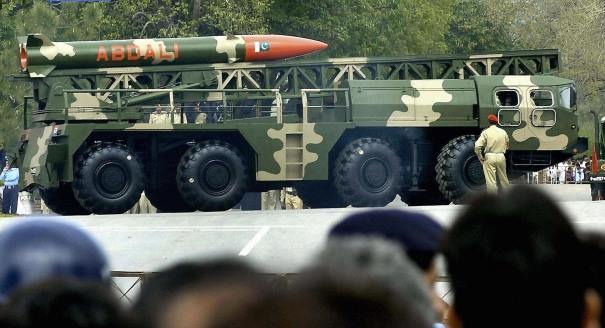Nuclear Emulation: Pakistan’s Nuclear Trajectory
WASHINGTON QUARTERLY
Toby Dalton is the co-director and a senior fellow of the Nuclear Policy Program at the Carnegie Endowment. An expert on nonproliferation and nuclear energy, his work addresses regional security challenges and the evolution of the global nuclear order. Dalton and Sadia Tasleem’s original article on Pakistan’s Nuclear Trajectory can be read in full here.
“‘The more it changes, the more it stays the same’—Jean-Baptiste Alphonse Karr could well have been writing his famous epigram about Pakistan’s nuclear deterrence policy. For a nuclear program some have called the “fastest growing in the world,” how can this axiom apply? After declaring a strategy in the early 2000s of “minimum credible deterrence,” to deter a perceived existential threat from India, in 2013 Pakistan announced that henceforth it would adopt a “full spectrum deterrence capability,”1 backed by a suite of air-, land- and sea-based nuclear delivery vehicles that Islamabad tested over the last decade. These include short-range, “tactical” missiles that are postured to deter “limited” Indian conventional military operations, and longer-range missiles that might be used either for countervalue or counterforce targeting. This is a picture of a nuclear arsenal in full bloom, whose growth probes the limits of what can be deterred with the threat of nuclear use.
But looking beyond new terminology and more advanced weapons systems, there are threads of a consistent logic driving Pakistan’s nuclear decision making. For Pakistani officials and scholars, increasing and diversifying Pakistan’s nuclear arsenal is not seen as a policy choice, but rather a compulsion to maintain an effective deterrent vis-à-vis India. Any advances in India’s conventional military capability, nuclear arsenal, or strategic position amplify the perception of an incessant and unremitting threat for which Pakistan has no recourse other than nuclear weapons. In this view, deterrence is more relative and elastic than fixed; “full-spectrum” capabilities provide a way to keep up and ensure that Pakistan’s deterrence remains credible, rather than a new strategy as such.”
Image: Getty.

